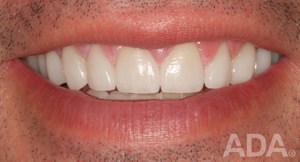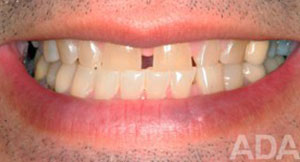Look in the mirror.
- Do you like the way your teeth look?
- Do you dislike the color of any of your teeth?
- Are there spaces between your teeth?
- Do you have any chips or cracks on your teeth?
- Are you missing any teeth?
- Do you have any crooked teeth?
- Do you feel your teeth are too long or too short?
- Are you pleased with the shapes and position of your teeth?
If your answers show that you might want a change in your smile, talk to your dentist about Improving Your Smile.
A great smile can be the most attractive feature of your face. A smile helps you express health, success, youth and sincerity. It is a great asset in your personal, business and social contacts. So it’s important that you are happy with how your smile looks. But if you are like many people, you may not be.
Your dentist has many different techniques to shape, sculpt, and make your smile more beautiful. With a few simple steps, you can have a smile you feel great about. And treatment may be more affordable than you think.
Example of an Improved Smile



